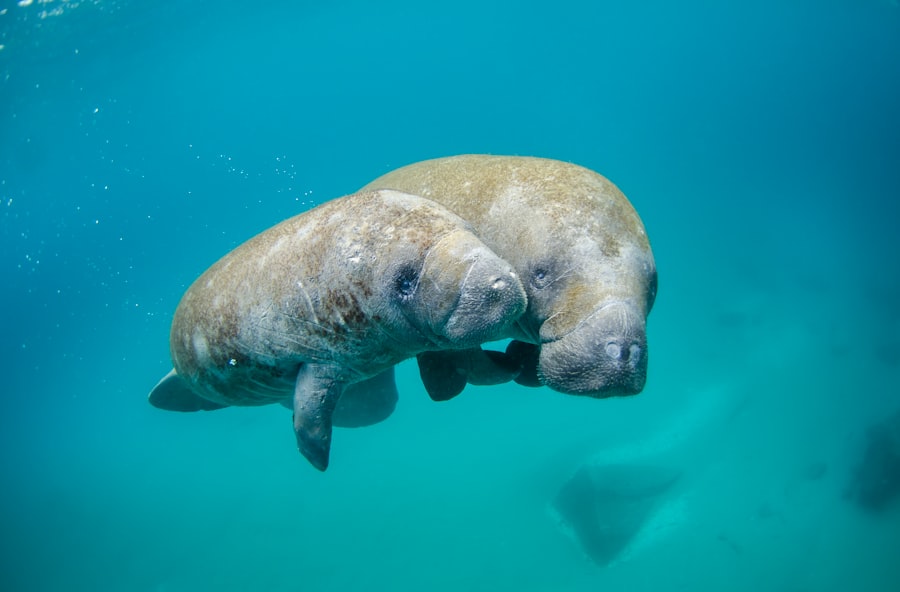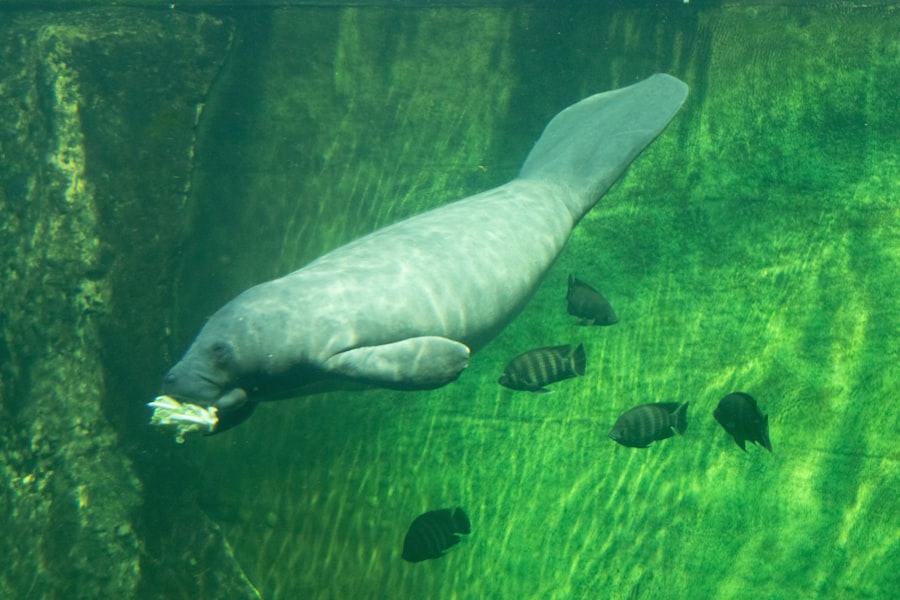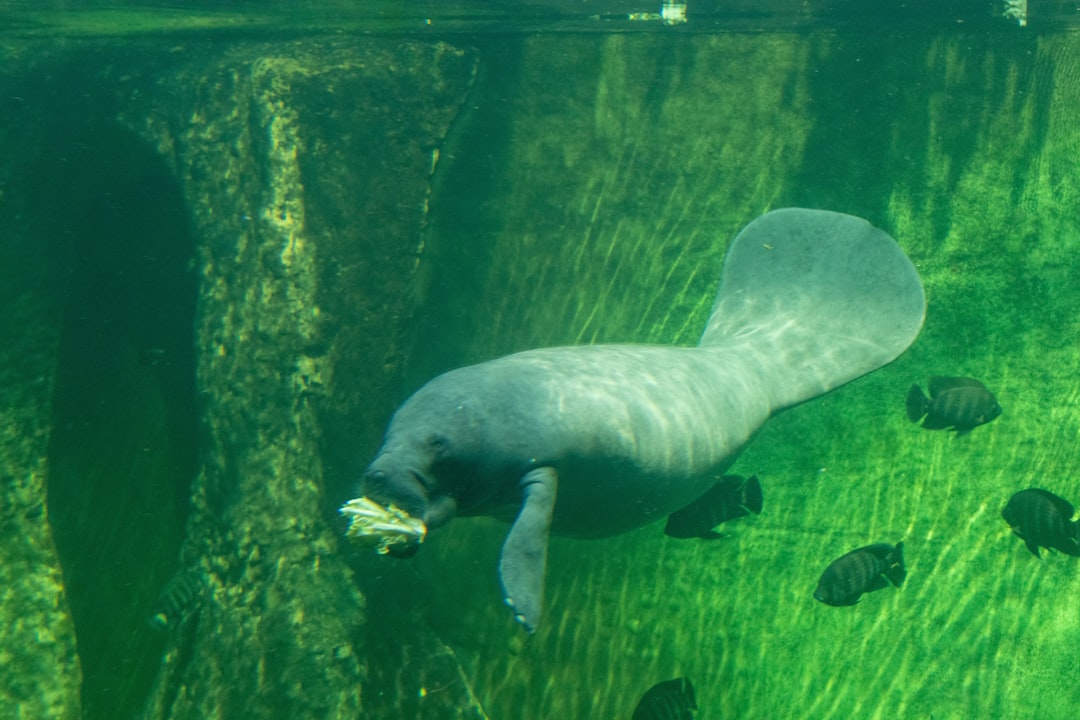Manatees, often referred to as “sea cows,” are gentle marine mammals that inhabit warm coastal waters, rivers, and springs. Their slow-moving nature and herbivorous diet make them a unique part of the aquatic ecosystem. As keystone species, manatees play a crucial role in maintaining the health of seagrass beds, which are vital for water quality and provide habitat for numerous marine organisms.
The conservation of manatees is not merely about protecting a single species; it is about preserving the intricate web of life that depends on their existence. The decline of manatee populations can lead to significant ecological imbalances, affecting everything from water clarity to the health of fish populations. Moreover, manatees are an important cultural symbol in many coastal communities.
They attract ecotourism, which can provide economic benefits while promoting awareness and appreciation for marine environments. The presence of manatees can enhance local economies through activities such as wildlife watching, boating tours, and educational programs. Thus, conserving manatees is not only an environmental imperative but also a socio-economic one.
Protecting these gentle giants ensures that future generations can enjoy the beauty and wonder of these magnificent creatures while also benefiting from the ecosystems they help sustain.
Key Takeaways
- Manatee conservation is important for preserving the species and maintaining the balance of aquatic ecosystems.
- Observation and education centers play a crucial role in raising awareness and educating the public about manatee conservation.
- Manatee conservation efforts have a long history, with organizations and individuals working to protect the species for decades.
- Manatee conservation faces challenges such as habitat loss, boat strikes, and pollution, which threaten the survival of manatees.
- Human activities, including boat traffic, coastal development, and pollution, have a significant impact on manatee populations and their habitats.
The Role of Observation and Education Centers in Manatee Conservation
Observation and education centers serve as vital hubs for manatee conservation efforts. These facilities provide a platform for the public to learn about manatees, their habitats, and the challenges they face. By offering interactive exhibits, guided tours, and educational programs, these centers foster a deeper understanding of the importance of manatees in marine ecosystems.
Visitors can observe manatees in their natural habitats or in rehabilitation facilities, gaining firsthand experience that can inspire a commitment to conservation. In addition to raising awareness, these centers often engage in research and data collection that contribute to broader conservation efforts. By monitoring manatee populations and their behaviors, researchers can identify trends and threats that may not be immediately apparent.
This data is crucial for informing policy decisions and conservation strategies. Furthermore, many observation centers collaborate with local governments and non-profit organizations to promote legislation aimed at protecting manatees and their habitats. Through community outreach and education initiatives, these centers play a pivotal role in mobilizing public support for conservation efforts.
The History of Manatee Conservation Efforts

The history of manatee conservation is marked by a growing recognition of the species’ vulnerability and the need for protective measures. In the early 20th century, manatees were hunted extensively for their meat and hides, leading to significant population declines. It wasn’t until the 1970s that serious conservation efforts began to take shape.
The U.S. Endangered Species Act of 1973 classified the West Indian manatee as endangered, providing a legal framework for its protection. This marked a turning point in conservation efforts, as it prompted increased research funding and public awareness campaigns.
Throughout the years, various organizations have emerged to advocate for manatee protection. The Save the Manatee Club, founded in 1981 by former Florida Governor Bob Graham and singer Jimmy Buffett, has played a crucial role in raising awareness and funding for manatee conservation initiatives. Their efforts have included habitat restoration projects, educational outreach programs, and lobbying for stronger regulations to protect manatees from boat strikes and habitat loss.
Over time, these collective efforts have led to improved protections for manatees, although challenges remain.
The Challenges Facing Manatee Conservation
| Challenges | Impact |
|---|---|
| Habitat loss | Reduction in available feeding and breeding grounds |
| Water pollution | Health issues and decreased food sources |
| Boat collisions | Physical injuries and fatalities |
| Climate change | Altered water temperatures and food availability |
| Illegal hunting and poaching | Decline in manatee population |
Despite significant strides in manatee conservation, numerous challenges persist that threaten their survival. One of the most pressing issues is habitat loss due to coastal development and pollution.
Additionally, water quality issues stemming from agricultural runoff and industrial discharges can lead to harmful algal blooms that further diminish seagrass habitats. Another major challenge is the risk of boat strikes. Manatees are slow-moving creatures that often inhabit shallow waters where boating activity is prevalent.
Collisions with boats can result in severe injuries or fatalities for these animals. Despite regulations aimed at reducing boat speeds in manatee habitats, compliance remains inconsistent. Furthermore, climate change poses an emerging threat to manatees by altering their habitats and food sources.
Rising sea temperatures can affect seagrass growth, while increased storm intensity can lead to habitat destruction.
The Impact of Human Activities on Manatee Populations
Human activities have had a profound impact on manatee populations over the years. Habitat destruction due to coastal development is one of the most significant threats facing these gentle giants. As cities expand along coastlines and waterways, critical habitats such as seagrass beds and freshwater springs are often compromised or lost entirely.
This not only reduces the available food sources for manatees but also disrupts their migratory patterns and breeding grounds. Pollution is another major concern that affects manatee health and survival. Nutrient runoff from agricultural practices can lead to algal blooms that deplete oxygen levels in the water, creating dead zones where marine life cannot thrive.
These conditions can be detrimental to seagrass beds, which are essential for manatees’ diets. Additionally, plastic pollution poses a direct threat as manatees may ingest debris or become entangled in discarded fishing gear. The cumulative effects of these human activities underscore the urgent need for comprehensive conservation strategies that address both habitat protection and pollution control.
The Success Stories of Manatee Conservation Efforts

Despite the challenges faced by manatees, there have been notable success stories in conservation efforts that highlight the resilience of this species when given proper protection and support. One such success is the gradual increase in manatee populations since they were listed as endangered under the Endangered Species Act in 1973. According to recent estimates by the U.S.
Fish and Wildlife Service, the population of West Indian manatees has grown significantly over the past few decades, with numbers reaching over 13,000 individuals in Florida alone. The implementation of designated critical habitats has also played a crucial role in protecting manatees from threats associated with human activities. Areas such as the Crystal River National Wildlife Refuge have been established to provide safe havens for manatees during their winter months when they seek warmer waters.
These protected areas not only offer refuge but also serve as focal points for research and education initiatives aimed at promoting awareness about manatee conservation.
How Observation and Education Centers Contribute to Manatee Conservation
Observation and education centers are instrumental in fostering a culture of conservation among local communities and visitors alike. By providing immersive experiences that allow people to observe manatees up close, these centers create emotional connections that inspire individuals to take action in support of conservation efforts. Educational programs tailored for schools and community groups help disseminate knowledge about manatee biology, behavior, and the threats they face, empowering participants to become advocates for change.
Moreover, many observation centers engage in citizen science initiatives that encourage community involvement in data collection and monitoring efforts. Volunteers may participate in activities such as tracking manatee sightings or reporting water quality data, contributing valuable information to ongoing research projects. This collaborative approach not only enhances scientific understanding but also fosters a sense of ownership among community members regarding local conservation efforts.
Ways to Get Involved in Manatee Conservation
There are numerous ways individuals can contribute to manatee conservation efforts at both local and national levels.
Many non-profits offer opportunities for individuals to assist with research projects, educational outreach programs, or habitat restoration initiatives.
Engaging with these organizations allows volunteers to gain hands-on experience while making meaningful contributions to conservation efforts. Additionally, supporting legislation aimed at protecting manatees is crucial for their long-term survival. Individuals can advocate for policies that promote habitat protection, regulate boating activities in critical areas, and address pollution issues affecting waterways.
Participating in local clean-up events or advocating for sustainable practices within communities can also have a positive impact on water quality and habitat health. Finally, spreading awareness about manatee conservation through social media platforms or community events can help educate others about the importance of protecting these gentle giants. By sharing information about ongoing conservation efforts or highlighting success stories, individuals can inspire others to take action and contribute to the collective goal of ensuring a future where manatees thrive in their natural habitats.
FAQs
What is the Manatee Observation and Education Center?
The Manatee Observation and Education Center is a facility dedicated to the conservation and education of the Florida manatee. It provides a platform for visitors to observe manatees in their natural habitat and learn about their behavior, habitat, and conservation efforts.
Where is the Manatee Observation and Education Center located?
The Manatee Observation and Education Center is located in Fort Pierce, Florida, along the Indian River Lagoon. The center is situated in a prime manatee habitat, making it an ideal location for observing these gentle creatures.
What can visitors expect to see at the Manatee Observation and Education Center?
Visitors can expect to see manatees in their natural habitat, as well as other wildlife such as dolphins, birds, and fish. The center also features educational exhibits, interactive displays, and guided tours to provide visitors with a comprehensive understanding of manatees and their ecosystem.
What educational programs are offered at the Manatee Observation and Education Center?
The center offers various educational programs for visitors of all ages, including guided tours, interactive exhibits, and educational presentations. These programs aim to raise awareness about manatees, their conservation status, and the importance of protecting their natural habitat.
How does the Manatee Observation and Education Center contribute to manatee conservation?
The center plays a crucial role in manatee conservation by raising awareness about the threats facing manatees and their habitat. It also supports research efforts, rehabilitation programs, and advocacy for manatee protection. Additionally, a portion of the center’s proceeds goes towards funding conservation initiatives.




